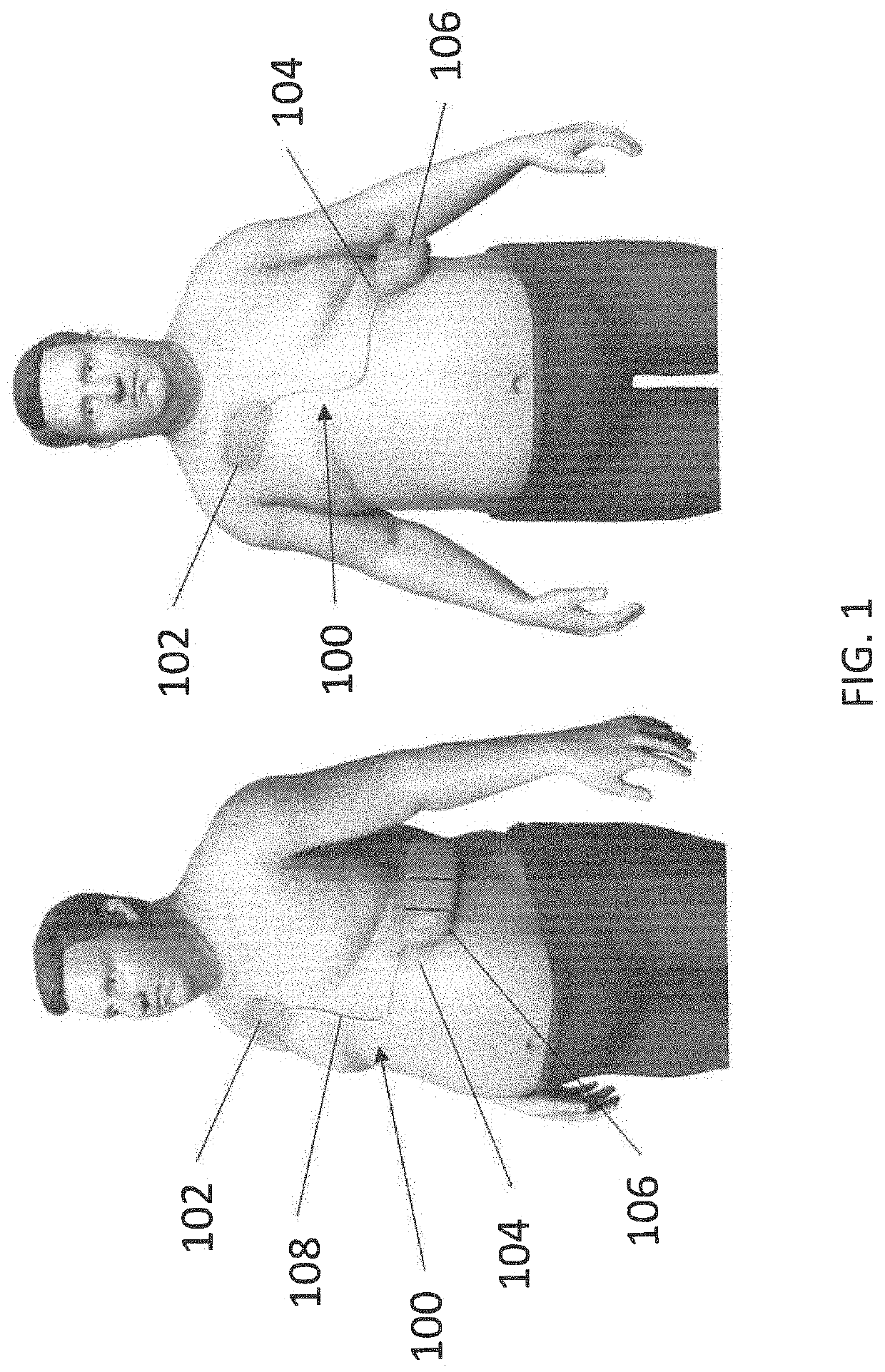Wearable devices
a technology of wearable devices and heart valves, applied in the field of wearable devices, can solve the problems of increasing the risk of experiencing potentially life-threatening abnormal heart rhythms or arrhythmias, increasing the risk, and increasing the risk
- Summary
- Abstract
- Description
- Claims
- Application Information
AI Technical Summary
Benefits of technology
Problems solved by technology
Method used
Image
Examples
example 1
[0222]The moisture vapor transmission rate (MVTR) were tested for various components and wearable defibrillator patient engagement substrates described herein. Adhesive conductive hydrogels were tested and had a MVTR rate of 4,000-5,000 g / m2 per day. Vapor permeable fabric materials were tested and had MVTR of 3,500-3,600 g / m2 per day.
[0223]Patient engagement substrates were tested that included: adhesive, conductive hydrogels, defibrillator electrode pad, wicking layer, flexible circuit, chassis support layer, and vapor permeable outer layers. The tested MVTR rates in g / m2 per day were around 1,800-1,900 for the tested patient engagement substrates.
[0224]Other combinations of materials were also tested. In another example the MVTR was tested across a carbon vinyl defibrillator electrode layer with 0.16″ diameter perforations, an acrylic defibrillator electrode adhesive, a non-woven wicking material layer, an acrylic chassis adhesive, a PVC chassis layer with a thickness of 16 mil. ...
PUM
 Login to View More
Login to View More Abstract
Description
Claims
Application Information
 Login to View More
Login to View More - R&D
- Intellectual Property
- Life Sciences
- Materials
- Tech Scout
- Unparalleled Data Quality
- Higher Quality Content
- 60% Fewer Hallucinations
Browse by: Latest US Patents, China's latest patents, Technical Efficacy Thesaurus, Application Domain, Technology Topic, Popular Technical Reports.
© 2025 PatSnap. All rights reserved.Legal|Privacy policy|Modern Slavery Act Transparency Statement|Sitemap|About US| Contact US: help@patsnap.com



